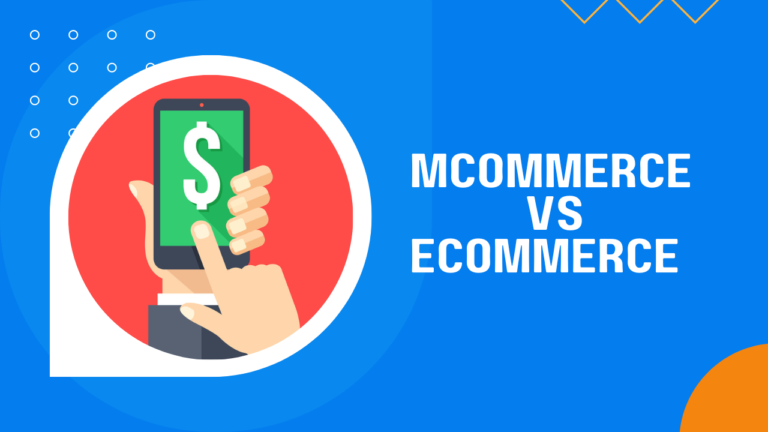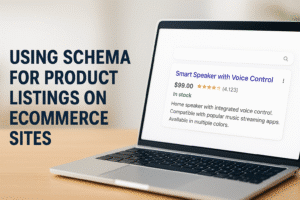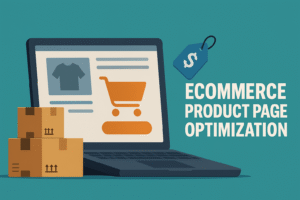In today’s digital age, online shopping has become an integral part of our lives. Whether it’s purchasing clothing, electronics, or groceries, consumers have a wide range of options available to them through ecommerce and mcommerce.
But what exactly is mcommerce, and how does it differ from ecommerce?
We will explore the key distinctions between these two popular online shopping methods. We will cover topics such as mobile optimization, payment options, customer experience, and marketing strategies for both mcommerce and ecommerce.
By the end of this article, you will have a clear understanding of the strengths and weaknesses of each approach, and be better equipped to make informed decisions about your own online retail strategy.
What is Mcommerce?
Mobile commerce, or mcommerce, refers to the process of buying and selling goods or services through a mobile device, such as a smartphone or tablet. With the increasing popularity of handheld devices, mcommerce has emerged as a major force in the world of online shopping. In fact, according to recent studies, more than half of all online purchases are made through mobile devices.
Examples of mcommerce include mobile apps for online shopping, mobile-optimized websites, and mobile payment solutions such as mobile wallets.
These mobile technologies have transformed the way people shop, allowing them to browse and purchase products on the go, from virtually anywhere, and even check their account balances through mobile banking.
One of the primary benefits of mcommerce is convenience. With a mobile phone, consumers can shop anytime, anywhere, without being tied to a desktop computer or laptop.
This flexibility makes it easy for consumers to browse products, compare prices, and make purchases on the spot, even while commuting or waiting in line.
Another benefit of mcommerce is personalization. With mobile devices, retailers can provide personalized recommendations, promotions, and deals based on the user’s location, purchase history, and other factors.
This can help to increase customer loyalty and drive repeat purchases.
Overall, mcommerce offers a range of benefits to both retailers and consumers, including convenience, personalization, and accessibility. As the use of mobile devices continues to grow, mcommerce is likely to become an even more important part of the online shopping landscape.
What is Ecommerce?
Ecommerce, short for electronic commerce, refers to the process of buying and selling goods or services online, through a website or online marketplace. It has revolutionized the way people shop and has become an increasingly important part of the global economy.
Examples of ecommerce include online marketplaces such as Amazon and eBay, online stores such as Zappos and Best Buy, and digital goods such as music and ebooks. Ecommerce platforms can range from simple web stores to complex enterprise-level systems with sophisticated features and integrations.
One of the primary benefits of ecommerce is convenience. Consumers can shop online from anywhere, at any time, without the need to physically visit a store. This can save time and effort, and also allows consumers to easily compare prices and product features from multiple retailers.
Another benefit of ecommerce is the ability to reach a global audience. Online retailers can sell to customers in any part of the world, breaking down geographic barriers and expanding their customer base. This can lead to increased sales and revenue, as well as new opportunities for growth and expansion.
Ecommerce also offers benefits to retailers, including lower overhead costs compared to physical stores, the ability to collect and analyze customer data, and the ability to leverage digital marketing channels to reach a wider audience.
Overall, ecommerce has transformed the way people shop and has become an essential part of modern commerce. As technology continues to evolve, ecommerce is likely to continue to grow and expand, providing new opportunities for retailers and consumers alike.
Key Differences Between Mcommerce and Ecommerce
The main difference between mcommerce and ecommerce is that mcommerce is specifically designed for use on mobile devices, while ecommerce is typically designed for use on desktop computers and laptops. This difference in design and focus has implications for factors such as mobile optimization, payment options, customer experience, and marketing strategies, which retailers need to consider when developing their online shopping strategy. While both approaches offer a range of benefits to retailers and consumers, understanding these differences is essential for success in the online marketplace.
Here are some other key differences between the two:
Payment options:
Another key difference between mcommerce and ecommerce is the payment options that are available. With mcommerce, mobile payment solutions such as mobile wallets and digital payment platforms are becoming increasingly popular, allowing customers to make payments quickly and easily using their mobile devices. Ecommerce, on the other hand, typically offers a wider range of payment options, including credit and debit cards, PayPal, and other digital payment methods.
Customer experience:
Customer experience is another important difference between mcommerce and ecommerce. With mcommerce, retailers need to focus on creating a seamless and enjoyable mobile shopping experience, with intuitive navigation, fast loading times, and easy checkout processes. Ecommerce retailers also need to focus on creating a positive customer experience, but have more flexibility in terms of design and user interface.
Marketing strategies:
Marketing strategies are also different between mcommerce and ecommerce. With mcommerce, retailers need to focus on mobile-specific marketing strategies such as SMS marketing, push notifications, and mobile app ads. Ecommerce retailers, on the other hand, typically use a wider range of marketing channels, including email marketing, social media marketing, and SEO.
Advantages and Disadvantages of Mcommerce
While mcommerce offers a range of benefits to both retailers and consumers, it also has some potential drawbacks that should be considered.
Advantages of Mcommerce
- Convenience: One of the biggest advantages of mcommerce is convenience. With mobile devices, consumers can shop anytime, anywhere, without being tied to a desktop computer or laptop. This flexibility makes it easy for consumers to browse products, compare prices, and make purchases on the spot, even while commuting or waiting in line.
- Personalization: Another advantage of mcommerce is personalization. Retailers can provide personalized recommendations, promotions, and deals based on the user’s location, purchase history, and other factors. This can help to increase customer loyalty and drive repeat purchases.
- Mobile-specific features: Mobile devices offer a range of features that are not available on desktop computers, such as GPS location tracking and touch-based navigation. Retailers can leverage these features to create unique and engaging mobile shopping experiences that differentiate their brand from competitors.
Disadvantages of Mcommerce
- Security concerns: One of the main disadvantages of mcommerce is security concerns. Mobile devices are more susceptible to security breaches and hacking attempts than desktop computers, which can put sensitive information such as credit card details and personal information at risk.
- Limited screen space: Another disadvantage of mcommerce is the limited screen space available on mobile devices. This can make it challenging for retailers to provide a comprehensive shopping experience and may limit the amount of product information and visuals that can be displayed.
- Compatibility issues: Finally, mcommerce may have compatibility issues with certain devices or operating systems, which can limit the reach of a retailer’s mobile shopping platform.
Despite these disadvantages, mcommerce offers a range of benefits to retailers and consumers alike, and is likely to continue to grow in popularity as mobile devices become even more prevalent in our daily lives.
Advantages and Disadvantages of Ecommerce
Ecommerce has become a major force in the world of online shopping, offering a range of benefits to both retailers and consumers. However, it also has some potential drawbacks that should be considered.
Advantages of Ecommerce
- Global reach: One of the biggest advantages of ecommerce is the ability to reach a global audience. Online retailers can sell to customers in any part of the world, breaking down geographic barriers and expanding their customer base. This can lead to increased sales and revenue, as well as new opportunities for growth and expansion.
- Lower overhead costs: Ecommerce also offers lower overhead costs compared to physical stores. Online retailers don’t need to pay for rent, utilities, or other expenses associated with operating a physical storefront, which can save them money and allow them to invest more in other areas of their business.
- Data collection and analysis: Another advantage of ecommerce is the ability to collect and analyze customer data. Online retailers can track customer behavior, preferences, and purchase history, and use this information to improve their marketing strategies and drive more sales.
Disadvantages of Ecommerce
- Lack of personal touch: One of the main disadvantages of ecommerce is the lack of personal touch compared to physical stores. Customers may miss the tactile experience of being able to touch and try on products before making a purchase, which can impact their buying decisions.
- Shipping costs and delays: Ecommerce also has potential drawbacks in terms of shipping costs and delays. Customers may have to pay extra for shipping, and may experience delays in receiving their products due to issues such as weather, logistics, or supply chain disruptions.
- Technical issues: Finally, ecommerce may also have technical issues such as website crashes, security breaches, and payment processing errors, which can impact the customer experience and lead to lost sales.
Despite these potential disadvantages, ecommerce offers a range of benefits to retailers and consumers alike, and has become an essential part of modern commerce. By understanding these advantages and disadvantages, retailers can create effective strategies that balance the benefits and drawbacks of ecommerce and cater to the unique needs of their customers.
Which One is Right for You?
Choosing between mcommerce and ecommerce can be a challenging decision, as both offer a range of benefits and drawbacks depending on your specific needs and goals. Here are some factors to consider when deciding which one is right for you:
Target audience: Consider your target audience and their preferred shopping habits. If your target audience primarily uses mobile devices, then mcommerce may be a better fit. If your target audience is more comfortable with traditional online shopping methods, then ecommerce may be the way to go.
Product offering: Consider the types of products or services that you offer. Certain products may be better suited to mobile shopping experiences, such as impulse buys or products that are often purchased on the go. Other products may require more detailed information or visuals that are better suited to desktop shopping experiences.
Budget: Consider your budget and resources. Mcommerce may require more investment in mobile-specific design and marketing strategies, while ecommerce may require more investment in website design and development.
Business goals: Consider your business goals and objectives. Are you looking to reach a wider audience, expand your customer base, or increase sales? Depending on your goals, one approach may be more effective than the other.
Making an informed decision:
To make an informed decision between mcommerce and ecommerce, it’s important to weigh the pros and cons of each approach, and to consider your specific needs and goals. You may also want to test both approaches with a small sample size before committing to a larger strategy.
The right choice between mcommerce and ecommerce will depend on a variety of factors unique to your business. By carefully considering these factors and making an informed decision, you can create a successful online shopping strategy that meets the needs of your customers and drives growth and success for your business.
The Future of Mcommerce
Mcommerce has already had a significant impact on the world of online shopping, but the future looks even brighter. Here are some emerging trends and predictions for the future of mcommerce:
Mobile-first design: As mobile devices continue to dominate the online landscape, retailers will need to prioritize mobile-first design strategies that provide seamless and intuitive mobile shopping experiences. This may include increased use of touch-based navigation, mobile-responsive design, and other features that optimize the mobile shopping experience.
Enhanced personalization: Personalization has already emerged as a key trend in mcommerce, but retailers are likely to continue to invest in this area in the future. This may include the use of artificial intelligence and machine learning to provide more accurate and targeted recommendations and promotions, as well as the use of location-based marketing strategies to drive foot traffic to physical stores.
Augmented reality and virtual reality: Another emerging trend in mcommerce is the use of augmented reality and virtual reality technologies to enhance the mobile shopping experience. These technologies can provide immersive product experiences, allowing customers to see how products will look in their homes or on their bodies before making a purchase.
Increased mobile payment options: Mobile payment solutions such as mobile wallets and digital payment platforms are already popular in mcommerce, but are likely to become even more prevalent in the future. As security concerns are addressed and more consumers become comfortable with these technologies, they are likely to become the preferred method of payment for many mobile shoppers.
Overall, the future of mcommerce looks bright, with continued investment in mobile-first design, personalization, and emerging technologies such as augmented reality and mobile payments. As the use of mobile devices continues to grow, retailers who prioritize mcommerce will be well-positioned to capitalize on this important trend and drive success in the online shopping landscape.









